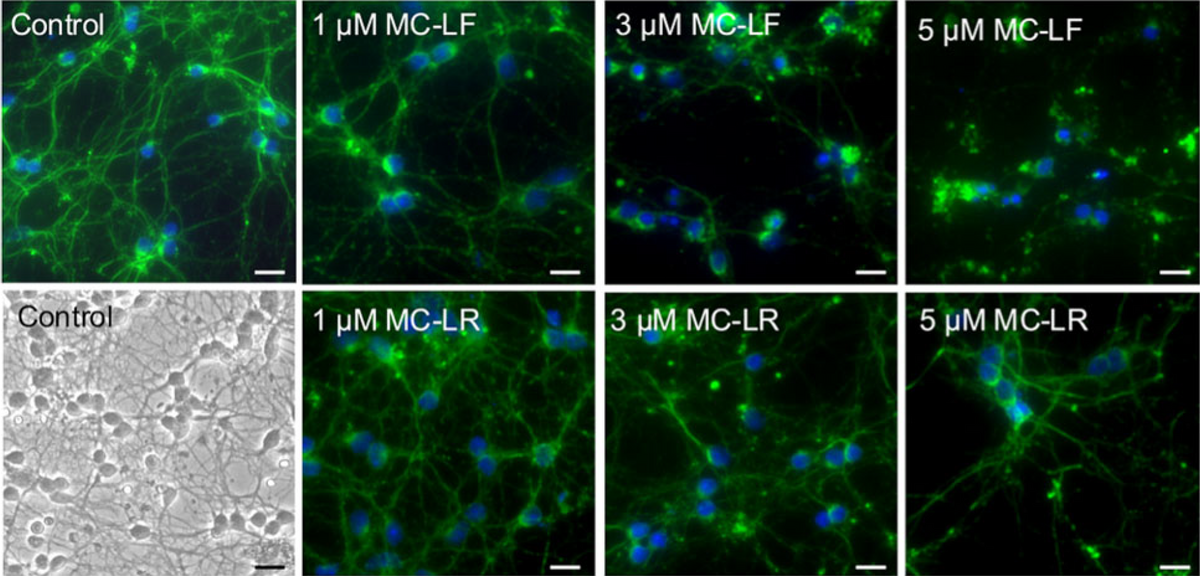Cyanobacterial toxins
Cyanobacterial toxins are structurally very diverse comprising cyclic peptides (microcystins, nodularins), alkaloids (anatoxin-a, anatoxin a(s), cylindrospermopsin, saxitoxin, lyngbiatoxin, lipopolysaccharide), aminoacids (BMAA) and polyketides (aplysiatoxin). Our primary interest are microcystins of which more than 100 congeners are known. We are interest when and why microcystins are formed in cyanobacteria, what happens during cyanobacterial bloom formation and consequently the potential risks for humans and the environment. The fomer means studying bloom formation in lakes, dams and cyanobacterial mats as far away as the polar regions. While the latter entails understanding the transporter mediated uptake and excretion of individual microcystin congeners in the body and cells (toxicokinetics) as well as the mechanism of interaction of these toxins with cells and subcellular interaction partners e.g. protein phosphatases (toxicodynamics). The combination of toxicokinetics and -dynamics governs the apical toxicity observed, as for example the toxicity of MC-LF and MC-LR in mouse neuronal cells (see picture taken from Feurstein et al Tox Sci 2011). Moreover, while in vitro techniques do allow us to understand the mechanisms of toxicity, it is only the combination of improved analytical techniques, also for human tissues samples (blood, urine, stool), to allows us to determine the degree of exposure and thus potential risk of these toxins.

